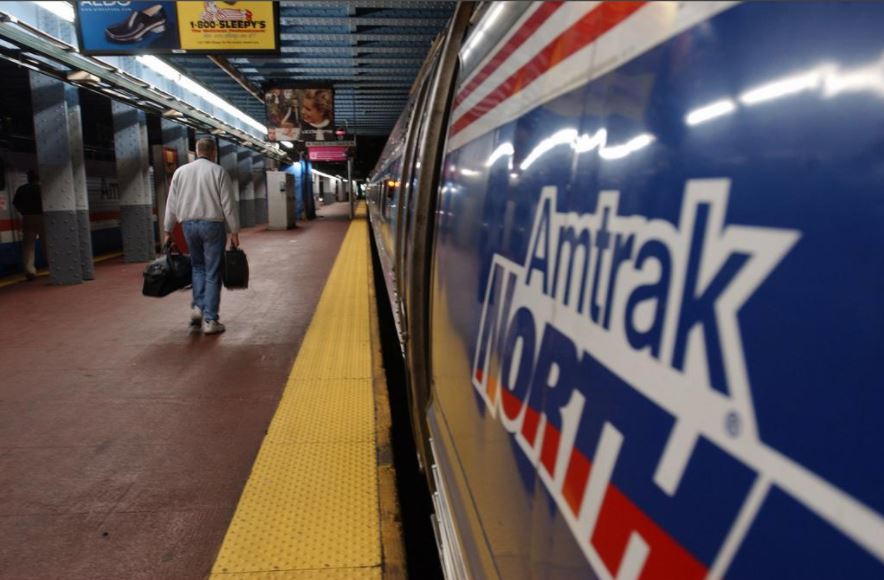Article originally published in the Philadelphia Business Journal on November 21, 2017
On Nov. 14, the National Transportation Safety Board released a synopsis of its report on the investigation of the Amtrak train crash in April 2016 near Chester, Pennsylvania, 15 miles south of Philadelphia. A passenger train was traveling southbound at about 100 mph when it slammed into a maintenance backhoe blocking the track, killing two maintenance employees and injuring 39 passengers. A chilling video from the train’s engine shows the 27 seconds just prior to the crash.
There were many factors deemed to have caused the accident, including lack of communication between shift foremen and train dispatchers and the failure to use a shunting device to take the track out of service while it was being worked on. Many other safety protocols also were violated.
Both workers who were killed and the train’s engineer tested positive for drugs. An NTSB press release stated that this was not the cause of the crash but was “symptomatic of a weak safety culture at Amtrak.”
That press release summarizing the NTSB report was critical of Amtrak, stating that the derailment “was caused by deficient safety management across many levels of Amtrak and the resultant lack of a clear, consistent and accepted vision for safety.”
NTSB Chairman Robert Sumwalt said, “Amtrak’s safety culture is failing, and is primed to fail again, until and unless Amtrak changes the way it practices safety management. … Investigators found a labor-management relationship so adversarial that safety programs became contentious at the bargaining table, with the unions ultimately refusing to participate.”
At an NTSB hearing on the crash, Sumwalt said, “Despite the emphasis on rules compliance, investigators did not find a culture of compliance. Rather, they found a culture of fear on one hand and a normalization of deviance from rules on another hand. … Amtrak had such a focus on rules, but we found widespread non-compliance with the rules.” Sumwalt added, “That is ironic.”
After the NTSB news release was issued, newly appointed Amtrak CEO Richard Anderson and outgoing CEO Charles Moorman sent the obligatory letter to employees stating, “Our customers expect us to operate safely and our jobs and lives depend on it. We can and will do better. Our pledge to you is that we will do everything possible to help move us forward.”
What that letter should have said is that the safety of our employees and passengers is our highest priority – more important than the on-time performance of our trains. During the investigation, workers told NTSB investigators that Amtrak emphasized on-time train performance before safety.
Amtrak has been in existence since 1971 and has experienced more than its share of accidents, many involving fatalities. What was it about this particular accident that got Amtrak to recognize that its customers and employees expect the railroad to operate safely? Words are meaningless unless they are backed up with a real change in culture leading to improved safety performance.
Where has the Amtrak board been over the years on the issue of safety? Why has the Amtrak board tolerated the lack of an effective safety culture within the company? As a former CEO of a chemical and glass materials company, safety was paramount for me. At each board meeting, I reported on our environmental, health and safety performance during the previous quarter before we reported on financial performance.
We empowered our employees who operated chemical processes to cease production if they felt that an unsafe condition existed. Unlike the reported failed culture within Amtrak, at my company management and labor were partners in making the workplace safe. This culture drove the company’s safety performance from fourth quartile to first quartile within the chemical industry.
In a Nov.14 article for The Philadelphia Inquirer, columnist Jason Laughlin reports that Jed Dodd, head of the rail-repair workers union, objected to workers being required by Amtrak to report safety issues, feeling that “… all the onus [is] on workers.” I would say to Mr. Dodd that this is certainly the responsibility of all managers and unionized workers. Within the right corporate culture, this is a non-issue and is imperative to improving safety performance and saving lives.
The adversarial nature of the relationship between Amtrak management and labor must end. All operating employees must take personal responsibility for their own safety, that of their fellow employees and their passengers. Employees must be empowered to not proceed with a task if safety protocols are not in place, even if it delays a train.
Safety is more important than on-time train performance.
Stan Silverman is founder and CEO of Silverman Leadership. He is a speaker, advisor and nationally syndicated writer on leadership, entrepreneurship and corporate governance. Silverman earned a Bachelor of Science degree in chemical engineering and an MBA degree from Drexel University. He is also an alumnus of the Advanced Management Program at the Harvard Business School. He can be reached at Stan@SilvermanLeadership.com.


Here is hoping that the management (both Corporate and labor) read your article and – act on it. Very well presented. Joel Cohen
THanks, Joel. (Just saw your comment). Hope all is well.